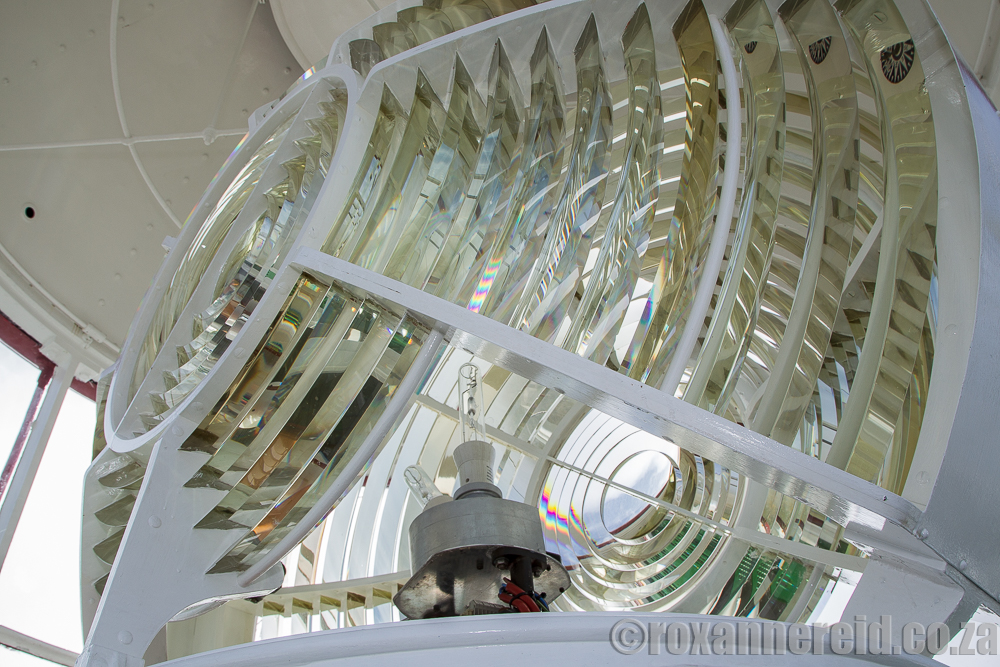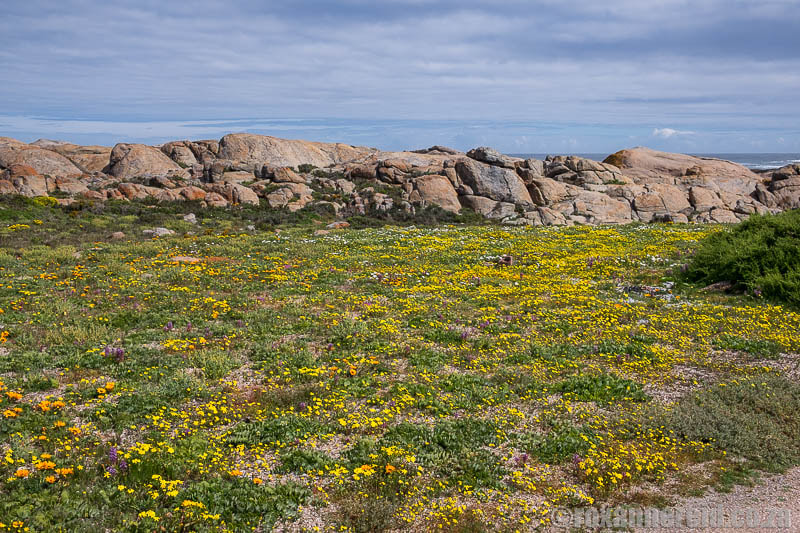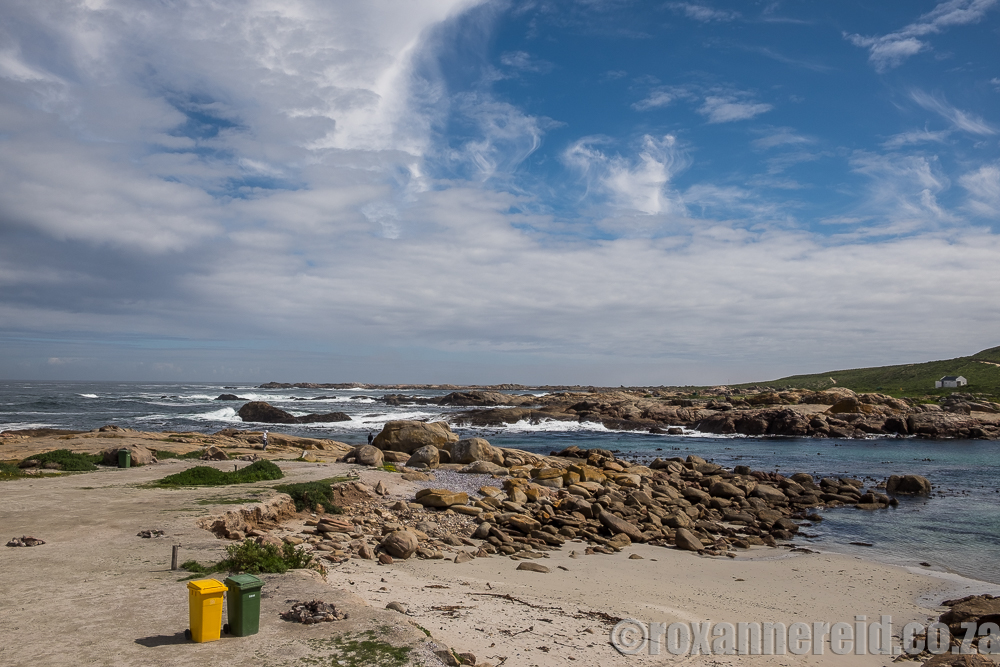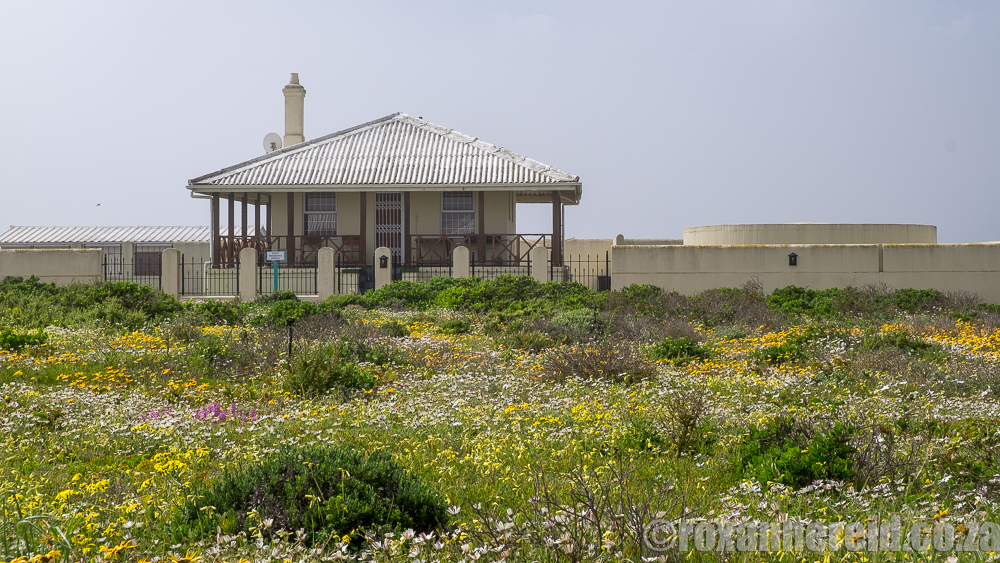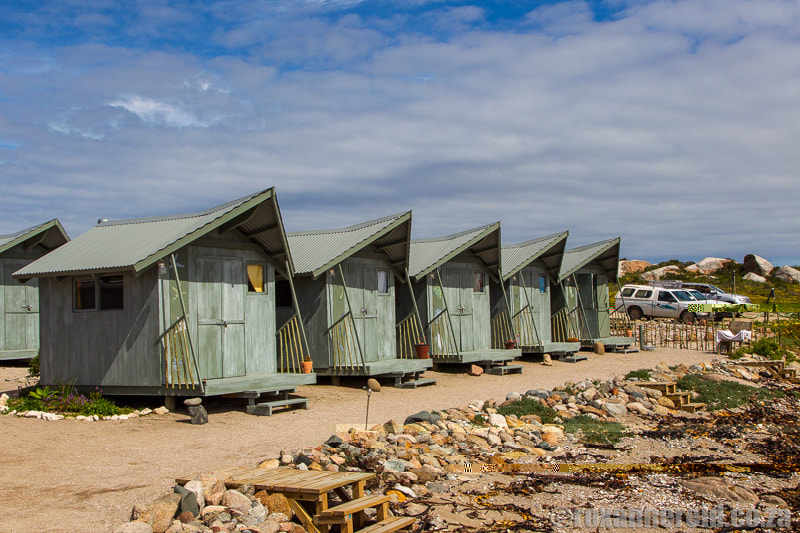
By Roxanne Reid
When you visit Paternoster on the West Coast, one of the highlights is the Cape Columbine Nature Reserve & lighthouse about 5km away along a gravel road. The nature reserve is especially pretty when carpeted with spring flowers and there’s something hugely romantic about lighthouses and their keepers.
When you visit Paternoster on the West Coast, one of the highlights is the Cape Columbine Nature Reserve & lighthouse about 5km away along a gravel road. The nature reserve is especially pretty when carpeted with spring flowers and there’s something hugely romantic about lighthouses and their keepers.
The Cape Columbine lighthouse owes its name to the British wooden ship Columbine, which was wrecked in 1829 a kilometre or two north of Castle Rock, where the lighthouse stands today. Commissioned in 1936, this was the last manned lighthouse to be built on the South African coast. And it’s still manned today.
Light-keeper Japie Greef let us walk 97 steps up a series of wooden ladders to the top of the 15-metre tower where the light is. It was boiling hot in there, so we stayed only long enough to admire the view and notice brass vents polished to within an inch of their lives.
Light-keeper Japie Greef let us walk 97 steps up a series of wooden ladders to the top of the 15-metre tower where the light is. It was boiling hot in there, so we stayed only long enough to admire the view and notice brass vents polished to within an inch of their lives.
Japie told us that the light flashes once every 15 seconds – a unique pulse that differentiates it from all other lighthouses. The idea, of course, is that sailors should know which lighthouse they’re about to smash into even if they’re hopelessly lost. The 15-million candlepower light can be seen from 60 kilometres away and weighs more than a ton. It was lifted up manually with ropes – no fancy forklifts or cranes – and it still floats there in a mercury bath to minimise wear and tear.
What about ghosts? On our last visit eight years ago, Japie admitted he had felt the presence of a ghost. But he said he just told it, ‘Go away, I’ve got work to do.’ That would have sounded awfully brave if he hadn’t kept looking over his shoulder. Now he told us the ghost had left.
What about ghosts? On our last visit eight years ago, Japie admitted he had felt the presence of a ghost. But he said he just told it, ‘Go away, I’ve got work to do.’ That would have sounded awfully brave if he hadn’t kept looking over his shoulder. Now he told us the ghost had left.
It had been a relatively passive ghost compared to the ones he remembered from his time at Cape Recife lighthouse near Port Elizabeth, where they threw garbage cans around when no one was about. Their presence was so strong, he confessed, that you wouldn’t get a dog – a much more sensitive beast than we are – to go into the lighthouse without a whole lot of whining and complaining.
Japie has been here for 11 years and is about to retire. He plans to live in Upington in the Northern Cape – about as different a landscape as you could imagine. ‘My mother’s there,’ he explained. ‘And anyway I’m looking forward to just sitting on the stoep and listening to the sound of motor bikes going past. I like to see if I can identify them by their different engine sounds.’
Japie has been here for 11 years and is about to retire. He plans to live in Upington in the Northern Cape – about as different a landscape as you could imagine. ‘My mother’s there,’ he explained. ‘And anyway I’m looking forward to just sitting on the stoep and listening to the sound of motor bikes going past. I like to see if I can identify them by their different engine sounds.’
Tieties Bay
Eager to banish all thoughts of ghosts, we drove to Tieties Bay. Inside the Cape Columbine Nature Reserve, it’s on one of the most gorgeous coastlines in the country. In September, yellow, white and orange spring flowers blanketed the veld.
Eager to banish all thoughts of ghosts, we drove to Tieties Bay. Inside the Cape Columbine Nature Reserve, it’s on one of the most gorgeous coastlines in the country. In September, yellow, white and orange spring flowers blanketed the veld.
The camping grounds were deserted and peaceful. No campers cluttered the views, which are achingly beautiful against a background of rocks and bright blue sea.
We’ve seen Tieties Bay in high season with hordes of campers cheek by jowl, all convinced this is the best spot on the coast, not caring that the rest of the world has turned up too. They pitch their tents and caravans on rock and sand, just inches away from each other, yet smugly satisfied with their tiny patch of paradise. All they need to be happy is some snorkelling gear, a skottel and a cooler bag packed with cold beers.
We’ve seen Tieties Bay in high season with hordes of campers cheek by jowl, all convinced this is the best spot on the coast, not caring that the rest of the world has turned up too. They pitch their tents and caravans on rock and sand, just inches away from each other, yet smugly satisfied with their tiny patch of paradise. All they need to be happy is some snorkelling gear, a skottel and a cooler bag packed with cold beers.
Me, I can’t help thinking of all that sand gritting around in my tent and sleeping bag, or the long hike to the ablutions. Although more have been built in the past eight years, they still seem inadequate for the multitude of campers that gather here in the summer holidays. But they’re of hardy stock, more concerned with tanning their hides to leather in the sun, fishing for hours while the kids scuff in the sand, and putting fresh fish on the braai before turning in for the night, hot, windswept, sun-tired, but content.
I wonder to what extent Afrikaans writer-storyteller and beach-dweller Pieter Pieterse’s TV cooking programme of the late 80s and early 90s influenced Tieties Bay’s popularity. Back then I’ll bet it wasn’t quite so busy and he happily kept his caravan and tent going as a permanent beach home. He probably regretted the TV series before long, when it brought the hordes to grab a piece of his paradise, ruining forever the very peacefulness he enjoyed.
Need to know
Where to stay in the reserve
1. Camp at Tieties Bay where there are about 60 sites for tents or caravans. Be warned that it gets extremely busy in the Dec/Jan holidays. Off the grid. Reservations, tel 022-7522718, email Ronnie.Martins@sbm.gov.za.
2. Stay in an old light-keeper’s cottage next to the lighthouse. Reservations, tel 021-4492400, email lighthouse.tourism@transnet.net
- It cost us R19 per person to enter the Cape Columbine reserve. You can spend the whole day there if you like and there are plenty of places for a picnic.
- It’s free to walk around the lighthouse and get an info pamphlet, but if you want to walk to the top of the light tower you’ll pay R16 per person.
- Paternoster is on the West Coast Way’s Foodie Route.
Where to stay in the reserve
1. Camp at Tieties Bay where there are about 60 sites for tents or caravans. Be warned that it gets extremely busy in the Dec/Jan holidays. Off the grid. Reservations, tel 022-7522718, email Ronnie.Martins@sbm.gov.za.
2. Stay in an old light-keeper’s cottage next to the lighthouse. Reservations, tel 021-4492400, email lighthouse.tourism@transnet.net
3. Stay at the Sea Shack cabins on the beach not far from the entrance to the reserve. There are communal eco-loos, solar lights, gas showers and 10 tiny wooden cabins with just enough room for a double bed or two singles. There’s a communal cooking area, but no electricity. It’s pretty and has a lovely view of the ocean, but in high season you’d need not to mind being jammed up close to other people.
You may also enjoy
Paternoster: fishing boats, beaches and crayfish
10 things you may not know about Yzerfontein
Copyright © Roxanne Reid - No words or photographs on this site may be used without permission from roxannereid.co.za
You may also enjoy
Paternoster: fishing boats, beaches and crayfish
10 things you may not know about Yzerfontein
Copyright © Roxanne Reid - No words or photographs on this site may be used without permission from roxannereid.co.za

